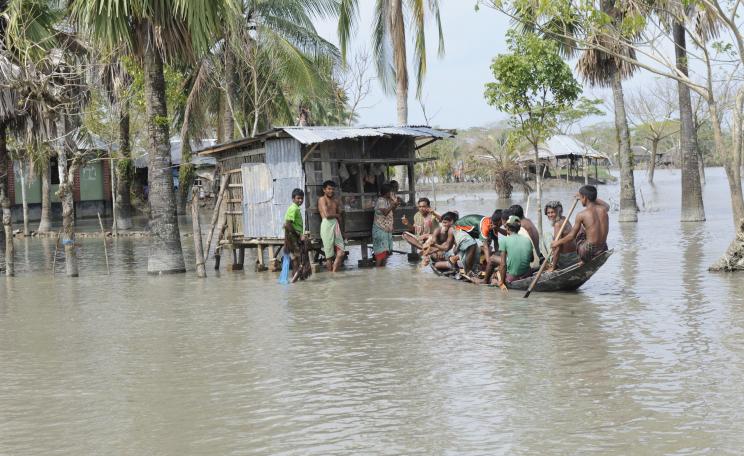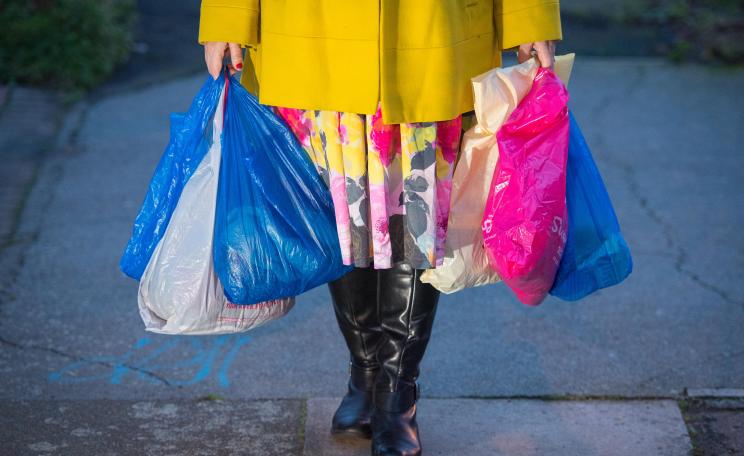As an overarching solution to all extreme weather events, we’ve primarily got to tackle climate change at the core.
We’ve witnessed a record-breaking heatwave in North America, devastating flooding in Germany, Belgium and the UK, and unprecedented torrential rain in China - in the last month alone.
After the hottest week of the year, London and Southern parts of England were deluged with almost a month’s worth of rain in less than 24 hours.
Hospitals had to be evacuated, tube stations were forced to close and motorists rescued by the emergency services after heavy rain caused sudden flooding throughout London over the weekend.
Impacts
All of these extreme weather events have hit the news worldwide because of the detrimental damage they are causing to communities and the economy.
They’ve caught authorities in some of the most advanced economies in the world entirely off-guard and unprepared.
So far in the UK, climate policy has focused on cutting greenhouse gas emissions, which is of course a primary concern, but the government urgently needs to implement measures to cope with the impacts of extreme weather, as the UK has been falling behind on this.
Why are the floods occurring
- Heavier rain caused by climate breakdown
Our atmosphere is getting hotter and hotter. Evaporation is increasing, which is changing how storms occur, with a rise in shorter, sharper intense rainfall.
Heavy rainfall events are projected to increase through the 21st century, to a level as much as three times the historical average.
Of course, heavy rain does not automatically lead to floods, but it increases the potential for them. Even moderate amounts of rainfall can cause serious damage in places where urban flooding is on the rise.
- Rising sea levels
As ocean temperatures rise and ice melts, global sea levels are rising.
Our oceans are approximately seven to eight inches higher than they were in 1900, with about three of those inches added since 1993 alone - a rate of rise per century greater than for any other century in at least the past 2,000 years.
As an overarching solution to all extreme weather events, we’ve primarily got to tackle climate change at the core.
Regardless of the action we take now, over the next 30 years, we will likely see 10-30cm of additional sea level rise. Our oceans are vast volumes of water, which slowly heats and slowly expands.
The sea levels today are based on historical warming, and as we’ve seen in the past month, many countries and places are already feeling the impact of flooding, which is only going to get worse before it gets better.
Why is urgent action needed
- Economic impact
Flooding causes around £300 million of damage to property every year, and, within our lifetime, we can expect to see that rise by 25-50 percent or so towards the end of the century.
Also, at the rate we’re on, by 2100, 10-20 percent airline routes around the world will be at risk of major disruption with hundreds of airports at risk of flooding.
Insurers are among those most concerned about the impacts of climate breakdown, and have warned that UK households and businesses in some areas could find themselves uninsurable if stronger action is not taken.
- Contamination and disease
Floodwater isn’t just water. It can often carry raw sewage, leaked toxic chemicals, and runoff from hazardous waste sites and factory farms. This causes polluted drinking water supplies and nasty eye, ear, skin, and gastrointestinal infections.
When floodwaters recede, bacteria and mold may remain, increasing rates of respiratory illnesses too, such as asthma.
- Impact on mental health
The catastrophic loss of life, businesses, possessions, homes and the uprooting of entire communities is of course going to have a long-lasting impact on mental health.
Studies have shown that Post Traumatic Stress Disorder (PTSD) of flood victims is still present over two years’ on.
It is also most often lower-income people, the elderly, and minority communities who suffer the greatest impacts.
These populations are least likely to have flood insurance, access to transportation during an evacuation, cash on hand, or the ability to relocate. The mental anguish of having to repair and replace possessions is huge.
How can we tackle extreme flooding
I’ve touched a lot on the negatives, but it’s no real use sharing the problem without any solutions.
What we do now is that It’s too late to stop the effects of climate change from happening, but we can reduce the impacts it will have on our lives.
Action is needed now to improve regulation about where and how properties are built, encourage the use of resilient materials, and consider innovative and natural solutions to climate change.
- Ramp down fossil fuel use
As an overarching solution to all extreme weather events, we’ve primarily got to tackle climate change at the core, reducing the rising atmospheric temperatures and CO2 emissions.
At present 350 million tonnes of CO2 is emitted a year in the UK. Therefore, we’ve got to transition away from fossil fuel use and invest in a green new deal which prioritises decarbonisation, zero-emission infrastructure and transport, and the creation of a multitude of green jobs in the process.
We’d need around £40 billion a year to decarbonise the economy at present, which in the grand scheme would only be one to two percent of GDP growth over 30 years, so it’s fundamentally worth the investment.
- Improve flood risk data
The UK really lacks flood risk data due to refusal to invest. The surface water flood hazard maps for the UK have not been improved since 2013 which is ridiculous.
How can we help people prepare for surface water flooding if they don’t know they are at risk?
- Educate people to prepare for flooding
No city, town or village is immune to flooding so we must educate our residents and businesses on how to prepare. This includes:
- creating a ‘flood kit’ filled with possessions you might need in the event of evacuation such as bottled water, nappies for kids, cash, medication, phone chargers, insurance documents etc.
- Purchasing sandbags if not provided free of charge by your local council
- Make sure your insurance is up-to-date and take detailed photographs of your property to show to your insurance company, should things take a bad turn
Also, we need to demonstrate the harm floodwaters can bring and encourage residents to remain indoors as watery streets might look harmless, but the water may be full of sewage, can carry remarkably heavy objects, and you can’t see what is under the surface.
- Rethink our infrastructure
Long term, adapting to the impacts of increased flooding will require a complete transformation of the UK’s infrastructure, including drainage and water supply systems, transport, energy supply and communications networks.
Large-scale flood barriers like the Thames barrier in London takes substantial engineering, and whilst effective in big cities with flood plains, it isn’t feasible in smaller, rural locations so we need to balance big engineering with small-scale property change.
Obviously, these changes require vast investment from the government, so we need to make sure preparations for extreme weather events are prioritised, because they’re only going to get worse.
- Increase green spaces and invest in sustainable urban drainage systems
Trees, hedges and vegetation increase water absorption, catch rainfall and slow down surface water run-off so to be honest it’s not surprising that events of extreme flooding are rising as we keep building and paving over our land.
We also need to implement sustainable urban drainage systems as every time we put in impermeable systems like tarmac on roads, water lands, rolls down the hill, and builds up, increasing flooding risk. These sustainable drainage systems include:
- Permeable paving - rain passes through the surface, either through gaps between individual blocks or permeable material such as gravel or porous asphalt. Large amounts of water can be stored temporarily under the surface and slowly infiltrated into the soil below. This reduces the chances of flooding
- Green roofs - roofs that include a layer of vegetation or patches of vegetation as part of the roof cover, reducing runoff
- Swales - shallow, brad vegetated channels on roads designed to store run off
- Rethink the UK’s roles and responsibilities for flood protection
One of the problems is that responsibility for flood protection in the UK is split among many authorities, with little central oversight.
Lead local flood authorities take responsibility for managing it, the Environment Agency for mapping it, and the Met Office for providing early warning. This makes it difficult for the public to have a good understanding of their own risk and what can be done.
Parliament’s public accounts committee warned earlier this year that the government was not doing enough to prevent damage from flooding, and said councils and local authorities needed much more help, including more cash.
Funding for flooding needs to be devolved to local areas and sit within a new national framework for addressing the climate emergency.
Fighting floods will only get harder as the world gets hotter, but if the government starts prioritising effective measures against climate change and extreme weather events, we can reduce the impact and increase the resilience of our communities, economy and future.
This Author
Sophie Johnson is a Zoology graduate and passionate conservation blogger from the UK.







